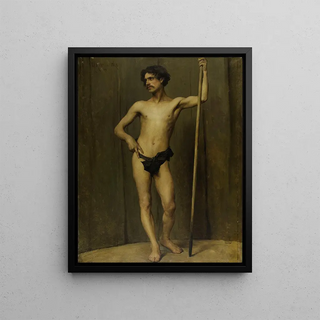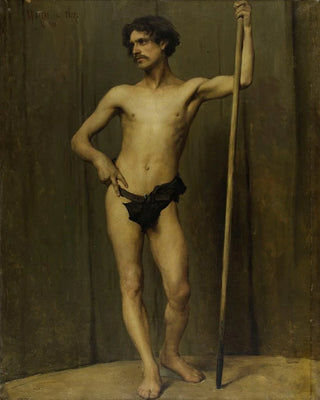Art print | Study of figure after the live model competition for the Prix de Rome - Georges Moreau de Tours


View from behind

Frame (optional)
In the fascinating world of art history, certain works stand out for their ability to capture the very essence of humanity. The art print "Étude de figure d'après le modèle vivant concours pour le prix de Rome" by Georges Moreau de Tours embodies this quest for truth and beauty. Through this study, the artist invites us to delve into the world of academic drawing, where precision and emotion intertwine to bring a faithful representation of the human body to life. This piece, both technical and expressive, speaks to the importance of observation and interpretation, fundamental in the creative process. Confronted with this art print, we are encouraged to reflect on the role of art in understanding our own existence.
Style and uniqueness of the work
The work of Georges Moreau de Tours is distinguished by undeniable technical mastery, characteristic of the great masters of academic drawing. The line, both precise and fluid, creates a dynamic that animates the model. Every muscle, every curve is rendered with such delicacy that it seems to vibrate under the viewer's gaze. Moreau de Tours does not hesitate to play with shadows and light, thus conferring an almost sculptural depth to his figures. What makes this art print particularly unique is its ability to transcend the simple academic exercise to become a work of art in its own right. The artist's sensitivity is evident in the way he captures not only the form but also the emotion of the model, revealing a subtle dialogue between the artist and his subject. Every stroke is loaded with meaning; every posture evokes a story, making this piece a living testimony of its time and the artistic aspirations of its creator.
The artist and his influence
Georges Moreau de Tours, an emblematic figure of the 19th century, managed to leave his mark on his era through his dedication to academic art. A student at the École des beaux-arts in Paris, he was deeply influenced by the great masters of the Renaissance and classicism. His career, marked by success, allowed him to become a respected teacher

Matte finish

View from behind

Frame (optional)
In the fascinating world of art history, certain works stand out for their ability to capture the very essence of humanity. The art print "Étude de figure d'après le modèle vivant concours pour le prix de Rome" by Georges Moreau de Tours embodies this quest for truth and beauty. Through this study, the artist invites us to delve into the world of academic drawing, where precision and emotion intertwine to bring a faithful representation of the human body to life. This piece, both technical and expressive, speaks to the importance of observation and interpretation, fundamental in the creative process. Confronted with this art print, we are encouraged to reflect on the role of art in understanding our own existence.
Style and uniqueness of the work
The work of Georges Moreau de Tours is distinguished by undeniable technical mastery, characteristic of the great masters of academic drawing. The line, both precise and fluid, creates a dynamic that animates the model. Every muscle, every curve is rendered with such delicacy that it seems to vibrate under the viewer's gaze. Moreau de Tours does not hesitate to play with shadows and light, thus conferring an almost sculptural depth to his figures. What makes this art print particularly unique is its ability to transcend the simple academic exercise to become a work of art in its own right. The artist's sensitivity is evident in the way he captures not only the form but also the emotion of the model, revealing a subtle dialogue between the artist and his subject. Every stroke is loaded with meaning; every posture evokes a story, making this piece a living testimony of its time and the artistic aspirations of its creator.
The artist and his influence
Georges Moreau de Tours, an emblematic figure of the 19th century, managed to leave his mark on his era through his dedication to academic art. A student at the École des beaux-arts in Paris, he was deeply influenced by the great masters of the Renaissance and classicism. His career, marked by success, allowed him to become a respected teacher






